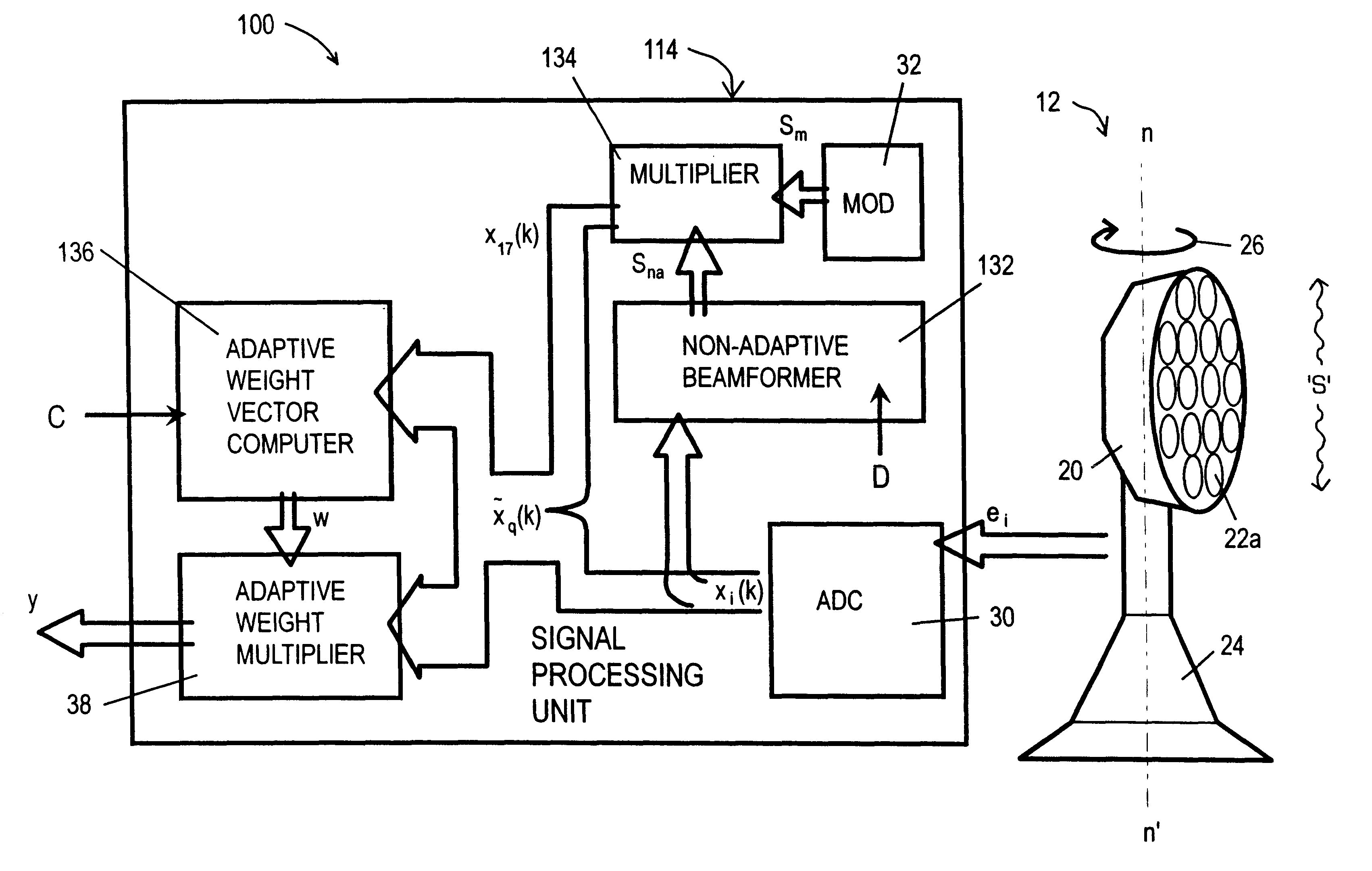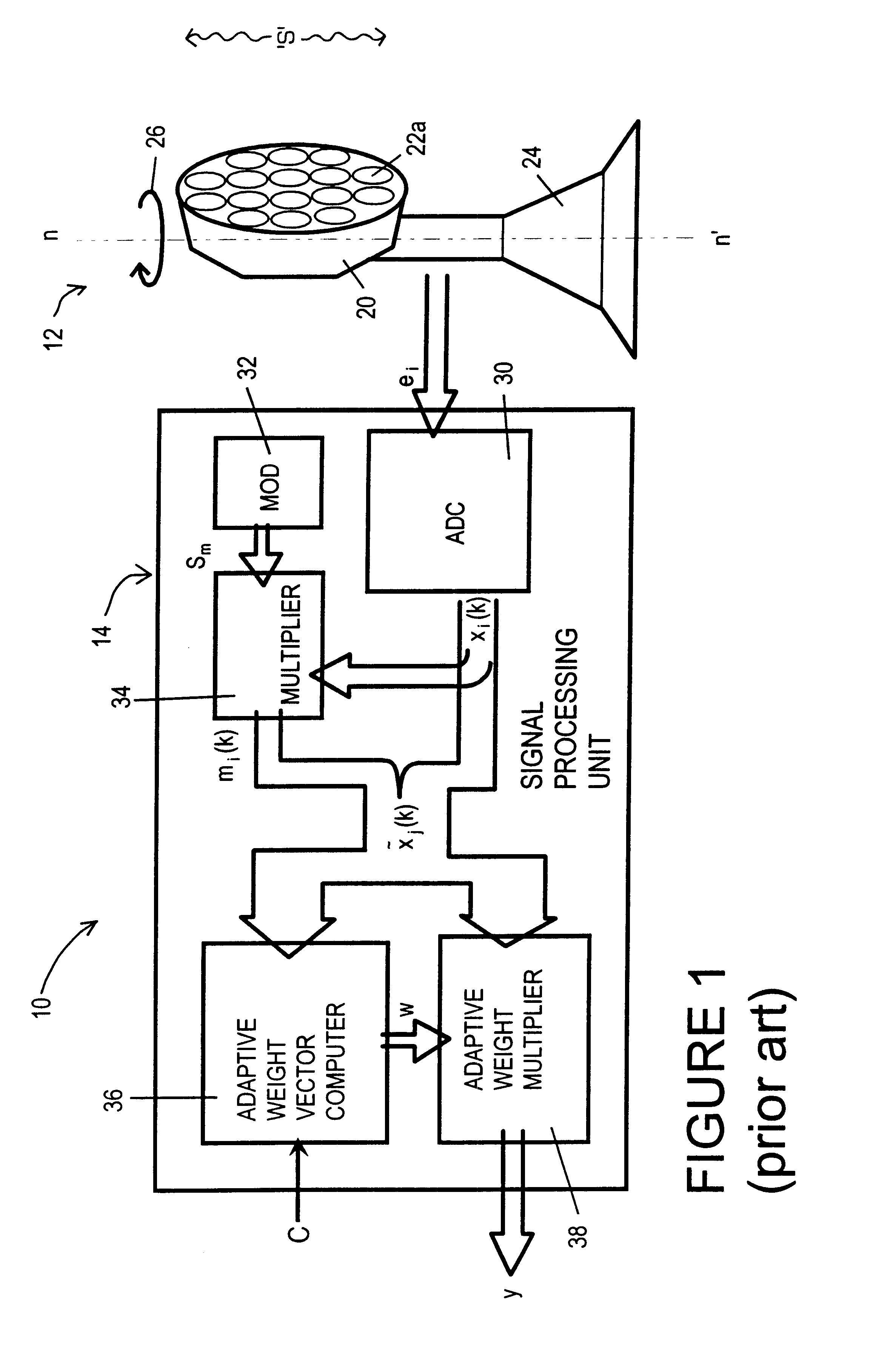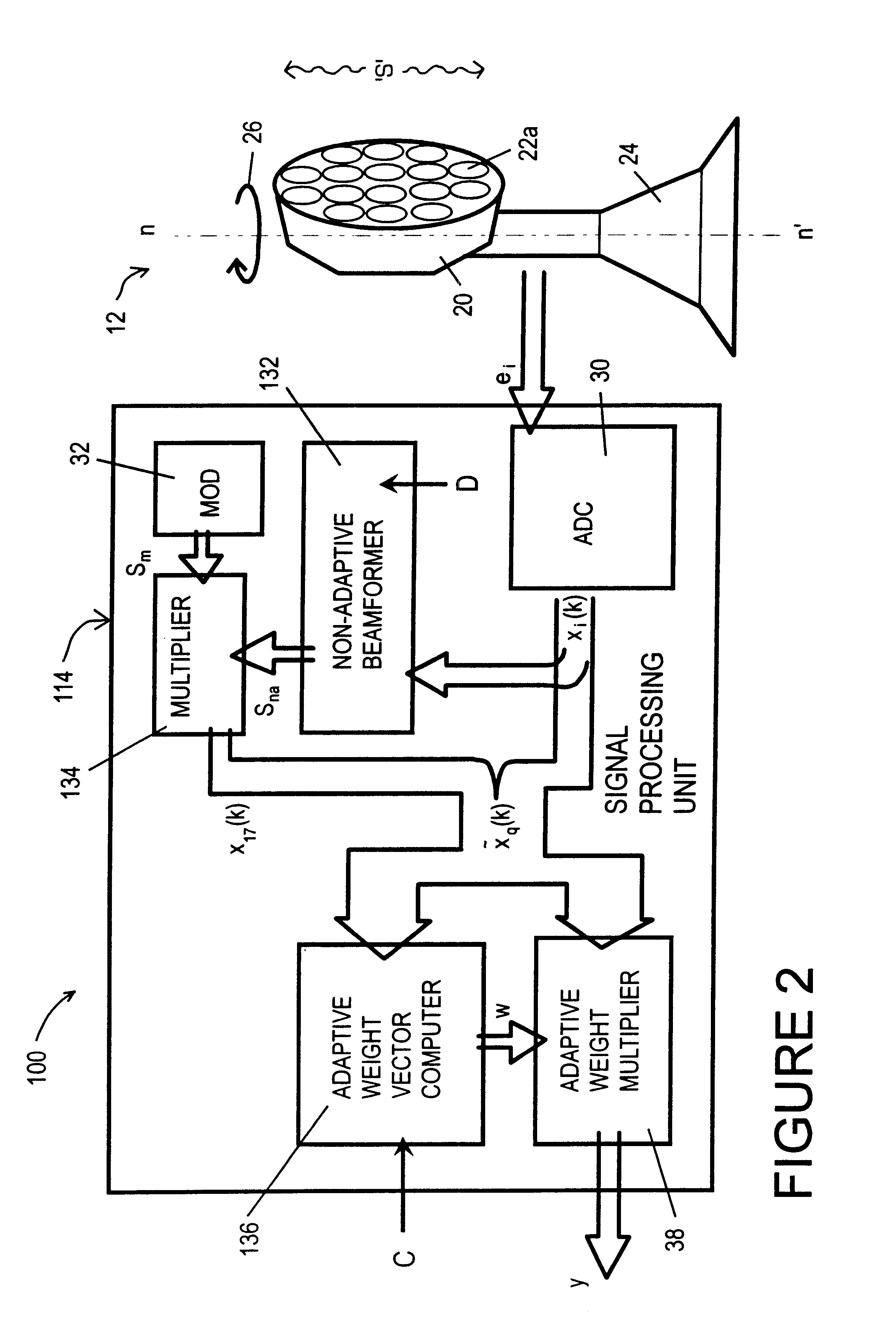Adaptive sensor array apparatus
a sensor array and array technology, applied in the direction of amplitude demodulation, line-fault/interference reduction, pulse technique, etc., can solve the problems of poor interference cancellation, computational complexity, and arrays not always stationary with respect, and achieve the effect of improving the rejection of output signals
- Summary
- Abstract
- Description
- Claims
- Application Information
AI Technical Summary
Benefits of technology
Problems solved by technology
Method used
Image
Examples
Embodiment Construction
Referring to FIG. 1, a prior art adaptive sensor array apparatus is indicated generally by 10. The apparatus 10 comprises a multielement antenna indicated by 12 and a processing unit indicated by 14. The antenna 12 incorporates an array 20 of sixteen microwave antenna sensor elements 22 such as an element 22a. The array 20 is rotatably mounted onto a mount 24 so that the elements 22 are orientatable through 360.degree. about an axis n-n' to receive radiation in various directions from different parts of a scene, represented by `S`, surrounding the antenna 12. Each element 22 is arranged to provide an analogue sensor output signal e.sub.i at an output which is connected to the unit 14 for processing; i is a reference index in a range of one to sixteen for identifying each element 22 uniquely.
The unit 14 incorporates an analogue-to-digital (ADC) converter unit 30, a modulation unit (MOD) 32, a multiplier unit (MULTIPLIER) 34, an adaptive weight vector computer 36 and an adaptive weigh...
PUM
 Login to View More
Login to View More Abstract
Description
Claims
Application Information
 Login to View More
Login to View More - R&D
- Intellectual Property
- Life Sciences
- Materials
- Tech Scout
- Unparalleled Data Quality
- Higher Quality Content
- 60% Fewer Hallucinations
Browse by: Latest US Patents, China's latest patents, Technical Efficacy Thesaurus, Application Domain, Technology Topic, Popular Technical Reports.
© 2025 PatSnap. All rights reserved.Legal|Privacy policy|Modern Slavery Act Transparency Statement|Sitemap|About US| Contact US: help@patsnap.com



